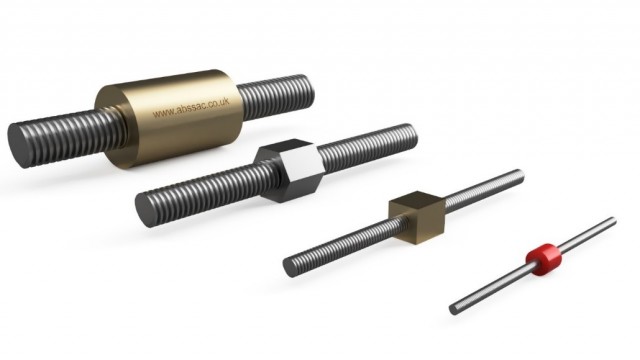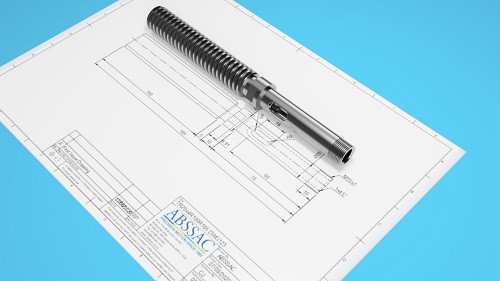

The combination of a lead screw and nut is an excellent and economical way to convert rotary motion into linear motion. Through a vast scope of screw formats and nut designs ABSSAC has been a preferred supplier to key industries for well over 40 years.
A lead screw, which can also be known as a power screw, is a length of metal bar stock that has had a thread form, either cold rolled or machined into it. The screw thread form is then available in a number of profiles including terms such as acme, stub acme, trapezoidal and square. All thread forms serve a purpose and so the specification of the correct screw for an application is paramount.
Common to all leadscrews, the thread form has what is termed a lead. The lead of a screw refers to the physical linear distance that can be travelled for each complete rotation of the screw. The mechanical advantage of a screw thread depends on its lead.
Additionally, all screws have a ‘pitch’, which is the physical distance between screw threads. For example, a thread pitch of 2mm means that the physical distance between one thread and the next is 2mm These terms are often used interchangeably, and for single-start screws (i.e. only a single thread helix), the lead and pitch are the same. However, it is important to remember that lead and pitch are not equal for screws with multiple starts e.g. 2start, 4start etc
Example - Vee Thread Form
Vee thread lead screws are ideal for finite movement within linear applications. The original Vee form thread, has a 60° thread angle.
Example - Trapezoidal Thread form
With Metric dimensions, the Trapezoidal thread with its 30° thread angle is now the most popular thread type.
To translate the rotation of the screw into a linear motion you require a nut. The nuts internal thread form should always match the external thread form of the screw for efficiency. How well these two items fit together will directly affect, accuracy, efficiency and of course the backlash. The shape, function and material choice of the nuts is as vast as the screw selection. The challenge is matching the available form to the function and this where ABSSAC excels. For over 40 years, ABSSAC lead screws have been chosen for applications all over the world and into various industry applications.
The nut material also plays a big part in the available load capacity and of course mechanical efficiency. Other parameters such as the speed of travel, duty cycle and the working environment are also considered when specifying. In short, the decision to use a lead screw and nut is a disciplined set of parameters that need to be reviewed to maximise the end result.
ABSSAC is a trusted partner in the development of leadscrews and nuts with many projects refined alongside customers’ requirements. Applications to date have seen miniature multi-start threads with a diameter of >4mm within medical scanners through to heavy duty applications using diameters up to 140mm.
Offering a second to none machining capability, ABSSAC has been successful in many reverse engineered applications, where the old part has been used as the template. This is particularly useful when engineering drawings of the required part are no longer in existence. The same machining capability also opens up the advantage of being able to supply lead screws, with end journals pre-machined to accept bearing mounts.

For further products please visit the ABSSAC web site page here or call one of their engineers.
Tel : 01386 421005
